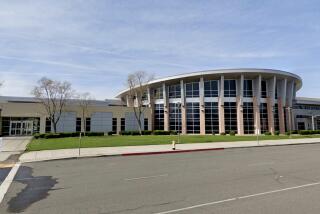Flight instructor flew aircraft during WWII
Evelyn Pinckert “Pinky” Brier, who was widely regarded as the first licensed female flight instructor in the United States and who owned and ran a private airport in San Bernardino for 40 years, has died. She was 98.
Brier, who also flew noncombat missions during World War II as a member of the Women Airforce Service Pilots, died Jan. 20 of pneumonia at Redlands Community Hospital in Redlands, Calif., said her niece Victoria Pinckert Rafa.
She learned to fly from a co-worker at the Southern California Gas Co. in the 1930s and then married her instructor, Air Force pilot Joe Brier, in 1939. The same year, she became the first woman to receive an airplane instructor’s license under the newly established Civil Air Authority, according to an Air Force history of women in aviation.
“I was the only one in this area licensed to teach aerobatics, which I loved,” Brier told the Riverside Press-Enterprise in 2001.
The couple operated San Bernardino’s Tri-City Airport, which was about 10 years old when Joe Brier bought it in 1938, and ran a flying school. For years they lived in a hangar at the airport that also served Redlands and Colton. They never had children.
“I thought a town that didn’t have an airport wasn’t much of a town,” Evelyn Brier said in the Press-Enterprise in 2003. “Flying was difficult to sell in those days.”
She did her part to promote it by landing her plane in the middle of Redlands Boulevard on May 19, 1938, to mark the advent of airmail in Redlands. She reportedly tied up traffic for hours.
With her husband serving in the military during World War II, Brier joined the WASP program and ferried warplanes to air bases within the United States.
She “relished the opportunity to fly military aircraft,” including B-17s, and trained military pilots, said Wilfrid C. Lemann, her attorney and longtime friend.
In the 2002 book “The Powder Puff Derby of 1929,” author Gene Nora Jessen wrote that the Briers’ “busy, grass strip airport . . . exemplified the heart and soul of aviation’s postwar development in the U.S.
“Pinky flew charter, and Joe kept the airplanes under repair -- a man with a magical ear for a sick engine. Pinky advertised that she would fly anywhere at any time, and she did,” Jessen recalled.
Long before commuter airlines were commonplace, Brier flew three short hops a day from Tri-City to Los Angeles International Airport.
“It was not uncommon for Pinky to fly wise guys to Sin City in the afternoon and transport [federal] agents -- who were tailing them -- to Las Vegas that night. . . . Her flights were about the only way to get to Vegas in a hurry,” Lemann said.
A little taller than 5 feet, Brier was “petite but tremendously strong, very opinionated,” her niece said. “She had to be to do what she did in her time.”
In 2004, she established the Brier Foundation to provide scholarships to young women interested in aviation or maritime careers.
Born April 12, 1909, in Medford, Wis., Brier was the eighth of 10 children of German immigrants. Well-known astrologer and psychic Jeane Dixon, who died in 1997, was her older sister. Her brother Ernie was one of several USC football players who modeled for the Tommy Trojan sculpture on campus.
When she was 9, her family moved to California. She graduated from San Bernardino High School and Longmire’s Business College in San Bernardino and joined the gas company.
Three years after her husband died in 1976, she sold most of the Tri-City Airport property to an Irvine-based development company. Commercial establishments now cover much of it.
In 1980, Brier piloted her last plane and turned to building a penthouse apartment on her remaining airport land. She converted a seat from a military plane into a chair for her makeup table. Etched into her shower door was the official WASP mascot designed by Walt Disney.
More to Read
Sign up for Essential California
The most important California stories and recommendations in your inbox every morning.
You may occasionally receive promotional content from the Los Angeles Times.










